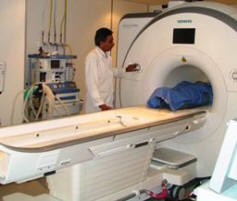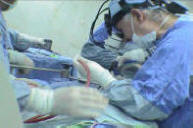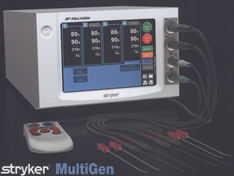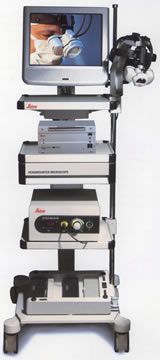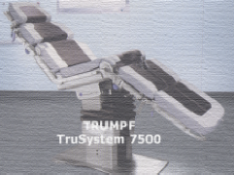|
Vascular dementia (VD) or multi-infarct dementia is
one of the most common causes of cognitive decline in
adult humans, secondary only to AD. This is
an increasingly diagnosed condition, where diffuse
microvascular ischemic disease of the brain leads
to progressive motor impairment and dementia.
The wide range of clinical phenotypes has inspired
numerous classification schemes. However, despite the
efforts of many researchers,
there are no universal clinical diagnostic criteria for
VD. In addition, histopathologic data make this picture
even more complex, showing that in many cases
vascular pathology coexists with the pathology of
AD. Although “pure” vascular pathology is relatively
uncommon, it is widely accepted that VD can be
split into cortical versus subcortical dementias: the
former has a prevalent involvement of the cortical
gray matter, whereas the latter is mostly characterized
by lacunar infarcts and deep white matter changes.
The sensitivity for detecting vascular brain injury
has widened significantly with the advent of modern
neuroimaging. In patients with VD,
quantitative
MRI studies have consistently identified general
brain atrophy and loss of cortical gray matter,
enlargement
of the ventricular CSF spaces, and even atrophy
of the hippocampus and amygdala. Since all of these
findings can also be seen in AD patients, the MRI
comparison between these two types of dementia is
usually inconclusive, especially at the early stages of
each disease. Compared with normal subjects, an
increased load of white matter lesions on T2-weighted
images has been identified consistently in VD. The
term leukoaraiosis has been suggested to describe the
white matter changes associated with cerebrovascular
disease, but the etiology and clinical relevance of
these changes remain to be determined in most
cases. The severity and frequency of leukoaraiosis
increase with advancing age, risk factors for stroke,
previous strokes (particularly of the lacunar type),
and dementia. On the other hand, however, patients
who meet neuroimaging criteria for leukoaraiosis may
also be free of clinical signs of dementia, suggesting
that the imaging changes are pathophysiologically
nonspecific.
Although the lack of pathological specificity of
conventional
MRI does not allow for the differentiation of
the heterogeneous pathological processes associated
with VD, neuroimaging still plays an important role
in the diagnostic process of this disease. One of the
most
used diagnostic criteria, the so-called NINDS-AIREN
criteria, includes brain imaging to support clinical
findings, on the basis of lesion location and pattern
typically associated with VD. Neuroimaging
confirmation
of cerebrovascular disease in VD provides
information about the topography and severity of
vascular
lesions. It may also assist with the differential
diagnosis of dementia associated with normal pressure
hydrocephalus, chronic subdural hematoma, arteriovenous
malformation, or tumoral diseases. In this
context, MRI is preferred over CT scan because of its
superior soft-tissue contrast. New MR modalities
such as diffusion tensor imaging (DTI) have been
reported to detect abnormalities not shown with
conventional
acquisition sequences and even attempt differential
diagnosis, for example between AD and VD,
on the basis of the brain regional differences in
diffusion abnormalities.
1H-MRSpectroscopy
As mentioned above, the differentiation between AD
and VD is challenging. In particular, since the patient
may have mixed pathology, one may want to identify
how much, if any, of the two pathologies are
contributing
to AD or VD, so that appropriate therapies
can be planned. In this difficult context, the metabolic
information provided by 1H-MRS can have some
value. Levels of NAA and NAA/Cr are similarly diffusely
reduced in the gray matter regions of patients
with VD and AD. However, cortical levels of mI/Cr are normal in VD patients and elevated in AD
patients. This can help in the
differential diagnosis and, perhaps, to even identify
concomitant AD in a demented patient with
cerebrovascular
disease. In addition, white matter levels of
NAA/Cr are generally lower in patients with VD than
in those with AD, reflecting the WM ischemic damage
in VD compared to the cortical degenerative
pathology in AD. This might be particularly
useful for early diagnosis and in the context of
specific
familial conditions such as cerebral autosomal
dominant arteriopathy with subcortical infarcts and
leukoencephalopathy (CADASIL).
The technical difficulties and limitations in performing
an MRS examination described in AD are
also relevant in this context. The use of short TE
(~ 20–35 ms) is recommended. Finally, given the
importance of assessing metabolic changes in cortical
gray matter structures without contamination from
other brain tissues, the use of MRI segmentation to
allow tissue specific spectroscopic measures is strongly
suggested. |
